- GRASSLAND – MAJOR ECONOMIC ACTIVITY
- MEDITERRANEAN CLIMATE
- LOCAL WINDS OF THE MEDITERRANEAN CLIMATE
UNIT 4 – CLIMATOLOGY – PART 37
Parts of the North American grasslands.
Mediterranean Climate or Warm Temperate Western Margin Climate or Warm Temperate West Coast Climate
DISTRIBUTION
- Entirely confined to the western portion of continental masses, between 30° and 45°north and south of the equator.
- The basic cause of this type of climate is the shifting of the wind belts.
- Mediterranean Sea has the greatest extent of this type of ‘winter rain climate’ and gives rise to the name Mediterranean Climate.
- The best developed form of this climatic type is found in central Chile.
- Other Mediterranean regions include
- California (around San Francisco),
- the south-western tip of Africa (around Cape Town),
- southern Australia, and south-west Australia (Swanland).
MEDITERRANEAN CLIMATE
Clear skies and high temperatures; hot, dry summers and cool, wet winters.
- Mean annual precipitation ranges from 35 – 90 cm.
- Temperature of warmest month greater than or equal to 10⁰
- Temperature of coldest month is less than 18⁰ C but greater than –3⁰ C
- Climate is not extremebecause of cooling from water bodies.
A DRY, WARM SUMMER WITH OFF-SHORE TRADES
- In summer when the sun is overhead at the Tropic of Cancer, the belt of influence of the Westerlies is shifted a little pole ward. Rain bearing winds are therefore not likely to reach the Mediterranean lands.
- The prevailing Trade Winds [tropical easterlies] are offshoreand there is practically no rain.
- Strong winds from inland desert regions pose the risk of wildfires.
RAINFALL IN WINTER WITH ON-SHORE WESTERLIES
- The Mediterranean lands receive most of their precipitation in winterwhen the Westerlies shift equator wards.
- In the northern hemisphere, the prevailing on-shore Westerlies bring much cyclonic rain from the Atlantic (Typical to Mediterranean Climate).
- The rain comes in heavy showers and only on a few days with bright sunny periods between them. This is another characteristic feature of the Mediterranean winter rain.
- Though the downpours are infrequent they are often very torrential and in mountainous districts, destructive floods
LOCAL WINDS OF THE MEDITERRANEAN CLIMATE
- Many local winds, some hot, others cold are common around the Mediterranean Sea.
SIROCCO
- This is a hot, dry dusty wind which originates in the Sahara Desert.
- It is most frequent in springand normally lasts for only a few days.
- The Sirocco blows outwards in a southerly direction (south to north) from the desert interiors into the cooler Mediterranean Sea.
- After crossing the Mediterranean Sea, the Sirocco is slightly cooled by the absorption of the water vapour.
- Its scorching heat withers [To dry up or shrivel from loss of moisture] vegetation and crops.
- This may be ‘Blood Rain’because the wind is carrying the red dust of the Sahara Desert.
MISTRAL
- Mistral is a cold windfrom the north, rushing down the Rhone valley in violent gusts between 40 and 80 miles per hour.
- The velocity of the Mistral is intensified by the funneling effectin the valley between the Alps and the Central Massif [Plateau in France].
- A similar type of cold north-easterly wind experienced along the Adriatic coastis called the
- Tramontaneand Gregale are similar cold winds of the Mediterranean Sea.
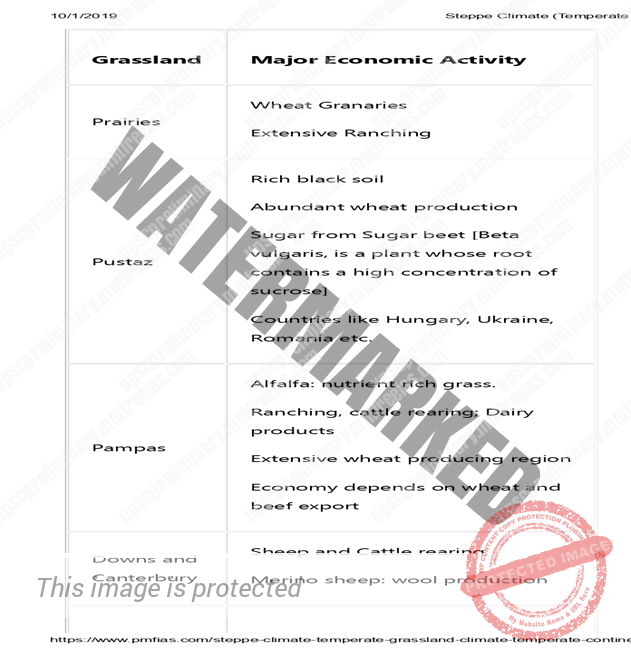
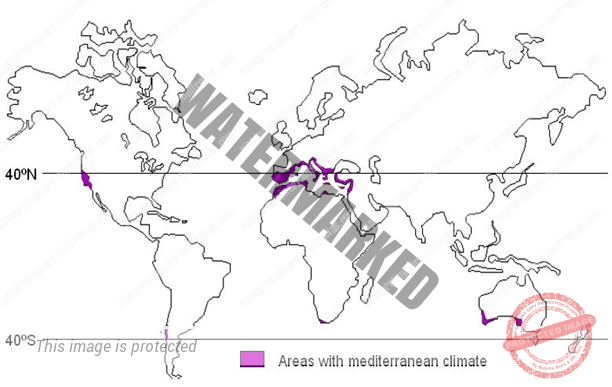
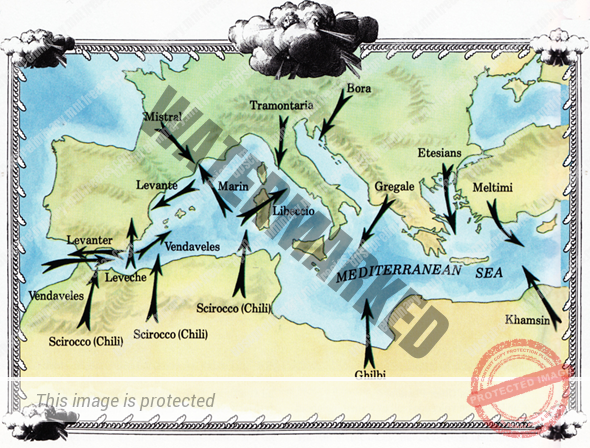
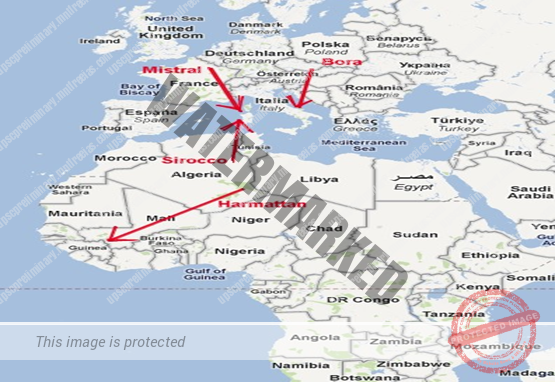
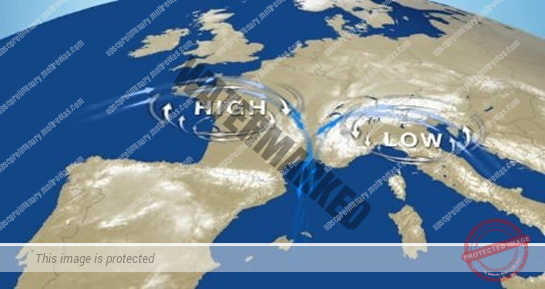
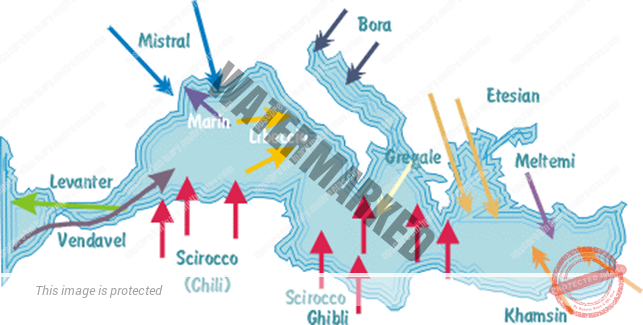
[pvc_stats postid="" increase="0" show_views_today="1"]
